Key Principles for Designing Effective CTA Buttons That Drive Action
CTA design buttons serve as the digital handshake between businesses and their potential customers. These small yet powerful design elements can make the difference between a successful conversion and a missed opportunity.
The art of crafting effective CTAs relies on three fundamental principles: visibility, simplicity, and urgency. Each principle plays a crucial role in guiding users toward desired actions while maintaining a seamless user experience.
Visibility: The Cornerstone of Successful CTA Design
Visibility stands as the cornerstone of successful CTA design. A well-designed button should command attention without disrupting the visual hierarchy of your page. This delicate balance requires careful consideration of size, placement, and color choices.
Size Optimization
Size optimization proves essential in creating buttons that catch the eye without overwhelming the user interface. Research shows that CTAs sized between 42 and 72 pixels in height achieve optimal click-through rates. The width should accommodate your button text while maintaining proportional balance, typically a 2:1 to 3:1 ratio of width to height.
Strategic Placement
Strategic placement transforms good CTAs into great ones. Users naturally focus their attention on specific areas of a webpage:
- The F-pattern reading behavior suggests positioning CTAs along the left side or top of the page
- Above-the-fold placement captures immediate attention
- Placing CTAs after value propositions increases conversion potential
Color Psychology
Color psychology plays a vital role in CTA effectiveness. Different hues trigger specific emotional responses:
Red – Creates urgency and excitement
Blue – Builds trust and reliability
Green – Signals growth and encouragement
Orange – Generates enthusiasm and confidence
The contrast between your CTA button and its surrounding elements determines its visual impact. A button that blends into the background becomes invisible to users. Creating contrast through complementary colors ensures your CTA stands out while maintaining design harmony.
Simplicity: Keeping Your Message Clear
Simplicity is key when it comes to crafting effective CTAs. Your message should be clear, concise, and action-oriented. Avoid using jargon or complex language that may confuse users.
Here are some tips for keeping your CTA message simple:
- Use strong action verbs: Start your CTA with an action verb that clearly communicates what you want users to do. For example, instead of saying “Learn More,” say “Get Started” or “Sign Up Now.”
- Be specific: Clearly state what users can expect when they click on your CTA. Instead of saying “Download,” say “Download Our Free eBook” or “Download Your Copy.”
- Keep it short: Limit your CTA text to just a few words if possible. Shorter messages are easier to read and understand quickly.
Urgency: Encouraging Immediate Action
Creating a sense of urgency can motivate users to take immediate action on your website. By communicating limited-time offers or exclusive deals through your CTAs, you can encourage visitors to act quickly rather than putting off their decision.
Here are some strategies for incorporating urgency into your CTA design:
- Use time-sensitive language: Include words like “now,” “today,” or “limited time only” in your CTA text to convey urgency.
- Highlight scarcity: If applicable, mention how many spots are left or how many items are available in order to create a sense of scarcity.
- Offer incentives: Provide additional reasons for users to act quickly such as discounts, bonuses, or free trials.
Continuous Testing and Refinement
Remember that effective CTA design requires continuous testing and refinement. What works for one audience might not resonate with another, making regular performance analysis and adjustment essential for optimal results.
Consider running A/B tests on different variations of your CTAs including size, color, placement, and wording in order to determine which combination yields the highest conversion rates.
By applying these key principles – visibility, simplicity, and urgency – you can create compelling CTAs that drive action on your website and ultimately lead to increased conversions.
2. Keeping Things Simple to Avoid Overwhelming Users While Creating Urgency with Persuasive Text
Understanding Decision Fatigue
Decision fatigue can significantly impact user engagement on websites. Research shows that presenting too many choices can paralyze users, leading to decreased conversion rates. A strategic approach limits CTAs to one or two per page, creating clear pathways for user action.
Learning from Amazon’s Product Pages
Consider Amazon’s product pages – they feature a prominent “Buy Now” button alongside “Add to Cart.” This deliberate limitation guides users toward specific actions without overwhelming them with multiple options. The principle applies across various industries – from SaaS platforms to e-commerce sites.
Designing Focused CTAs
Creating focused CTAs requires intentional design choices. A single, well-placed button draws attention and eliminates confusion about the next step. Netflix exemplifies this approach with their homepage featuring a single “Sign Up Now” button, directing users toward their primary conversion goal.
The Power of Urgency in CTAs
The psychology of urgency plays a crucial role in CTA effectiveness. Time-sensitive language creates immediate motivation for action. Phrases like:
“Limited Time Offer” “Only 2 Seats Left” “Sale Ends Tonight”
These expressions tap into users’ fear of missing out (FOMO), prompting quicker decision-making. Hotels.com masterfully implements this strategy by displaying room availability and recent bookings, creating natural urgency without appearing manipulative.
Finding the Right Balance with Urgency
Strategic implementation of urgency requires balance. Authentic scarcity messages build trust, while false urgency can damage brand credibility. Combining genuine time constraints with clear value propositions strengthens CTA performance. Companies like Booking.com demonstrate this by showing real-time availability data alongside their action buttons.
3. Crafting Strong Copy with Action-Oriented Verbs That Aligns With the Benefits or Urgency Inherent in Your Offer
The power of your CTA button lies in its copy. Action-oriented verbs serve as catalysts for user engagement, turning passive viewers into active participants. Words like “Discover” spark curiosity, “Start” signals the beginning of a journey, “Get” promises immediate value, and “Join” creates a sense of community.
Strong CTA copy connects directly with user desires and pain points. Rather than generic phrases like “Click Here” or “Submit,” effective button text speaks to specific benefits:
“Get Your Free Marketing Guide” outperforms “Download” “Start Saving Today” resonates better than “Sign Up” “Join 10,000+ Happy Customers” beats “Subscribe”
The psychology behind action verbs taps into human motivation. “Unlock,” “Build,” and “Create” empower users, while “Save,” “Earn,” and “Gain” appeal to acquisition instincts. Pairing these verbs with tangible benefits strengthens their impact:
Power Combinations for Maximum Impact:
- “Build Your Dream Website” – combines action with aspiration
- “Save 50% Now” – merges action with quantifiable value
- “Create Your Free Account” – links action to accessibility
Time-sensitive language amplifies urgency when paired with action verbs. “Claim Your Spot” becomes “Claim Your Spot Today,” adding immediate relevance. “Limited Time” offers transform into “Grab Your Discount Before Friday,” creating a specific timeline for action.
Testing different verb combinations reveals which phrases resonate with your audience. A/B testing button copy variations helps identify the most compelling combinations of action verbs and benefit statements for your specific market segment.
Conclusion
Mastering CTA design requires a balanced approach of artistry and analytics. The most successful CTA strategies emerge from rigorous A/B testing combined with thoughtful implementation of design principles. Regular testing reveals which button sizes, colors, and copy resonate most effectively with your specific audience.
Data-driven optimization paired with creative design choices leads to remarkable conversion improvements. A well-crafted CTA button serves as a powerful tool in your digital marketing arsenal, guiding users toward desired actions while enhancing their overall experience.
The investment in thoughtful CTA design pays dividends through:
Higher conversion rates
Improved user engagement
Enhanced brand perception
Better ROI on marketing efforts
Your CTA buttons act as digital handshakes between your brand and your audience. By implementing the design principles discussed throughout this guide, you create compelling touchpoints that transform casual visitors into engaged customers. For businesses focusing on Website development in Dubai, optimizing CTAs is an essential step toward building high-performing, user-friendly platforms that maximize every interaction. Remember: effective CTAs don’t just happen — they’re carefully crafted through strategic design decisions and continuous refinement based on user response.





